December 31st 2009. Can you remember where you were and what you were doing that night? I was at Dusty’s Bar and Grill, Whistler Creekside enjoying a great party surrounded by many of my friends. I was looking forward to the new decade and a fresh start to the New Year, especially with the winter Olympics about to hit my hometown in only a month’s time. But there was something else affecting me that night and contributing to the nervous excitement that circulates all New Years Eve celebrations. Something that was making it hard to stay focused on enjoying the final moments of 2009 as the clock approached midnight. Something I couldn’t stop thinking about. On January 1st, in only a few hours, I was catching an early morning flight with the crew and Stevie Smith to meet Gee Atherton and our host Caleb Smith of Spoke magazine in Queenstown, New Zealand. I was excited.
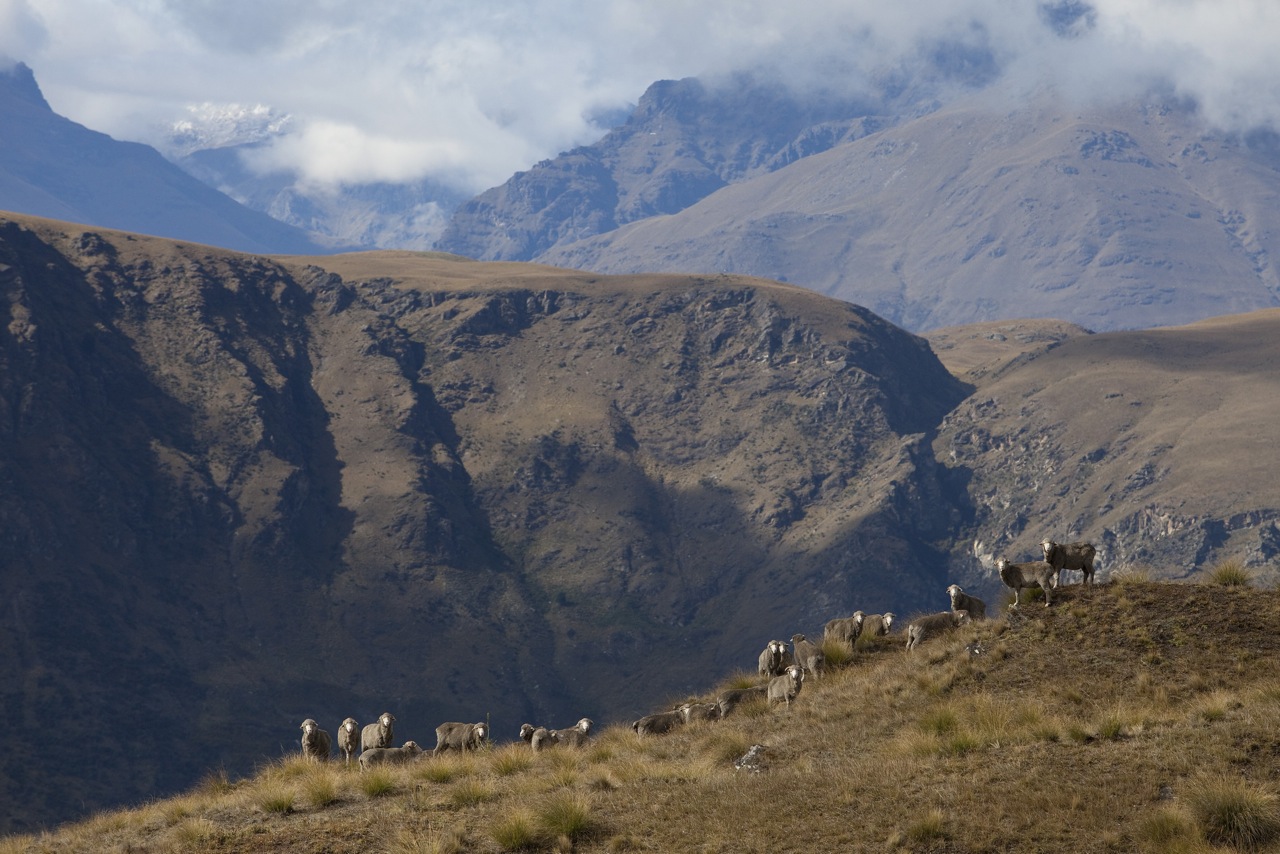
Bad weather but a visually impressive segment.
We were heading to New Zealand for the heart of their summer season. We expected long days with hours of good light, early morning sunrises and late evening sunsets. As soon as we landed in Queenstown we realized that was the type of light necessary to do justice to the landscape of the South Island found around Queenstown. It became no surprise to us that a lot of the Lord of the Rings was filmed here. Firing sunrises and sunsets were not to be however. The only sunny day we had was the first day we were there.
The weather was the story of the trip while we were shooting. We felt like storm chasers but instead of trying to catch the storm and get caught in the middle of it we were running from the weather. We were running to spots hoping to be there just after the storm had passed or in an attempt to get to a location and shoot before the storm would shut us down. In some instances we were simply caught in the storm and had to wait it out in the Red Bull van or on the trail. As you see in the movie there were some serious rainsqualls and one special summer snowfall that hit us, as we were shooting high on the hillside trails of Snow Park Mountain Resort.
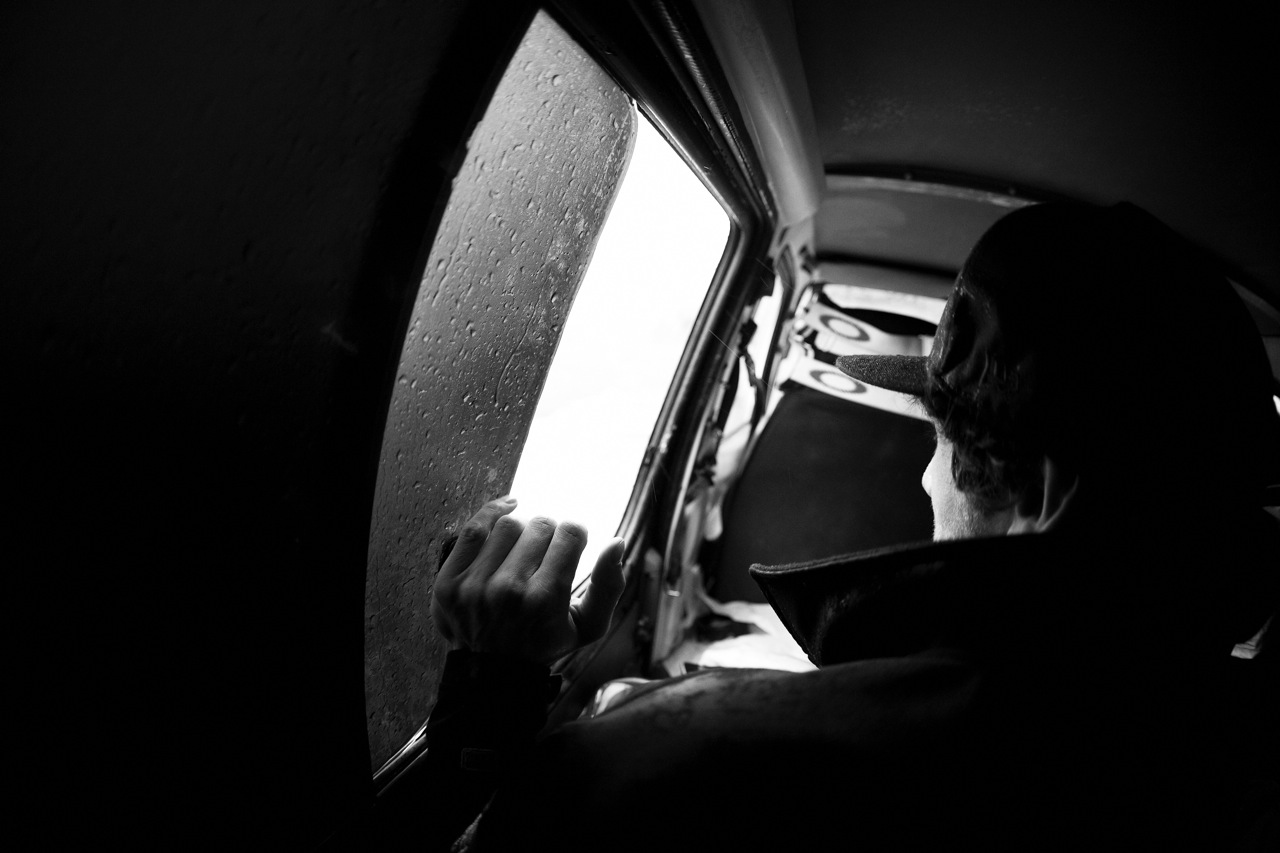
That being said, the look of the NZ segment combined with the pairing of the riders makes for a rather special end result. The segment has an interesting look to it. The bright colours look saturated and contrasted well against the landscape and the perpetually dark cloudy grey sky. The bright colours of the riders appear to pop off the screen. One of my favourite shots is the light flaring off of the riders helmets as they negotiate a rock lined turn to step down (38:49 of the DVD timeline).
The pace of the NZ segment also stands out for me. Stevie Smith and Gee Atherton are two of the fastest DH’ers on the planet. Gee is a consistent top 5 finisher on the World Cup circuit and Stevie looks to be making that elite group his preferred destination too. These guys are fast and this segment captures their speed. With repeated viewings, the viewer can begin to notice the similarities and the differences between the riding styles of Gee and Stevie.
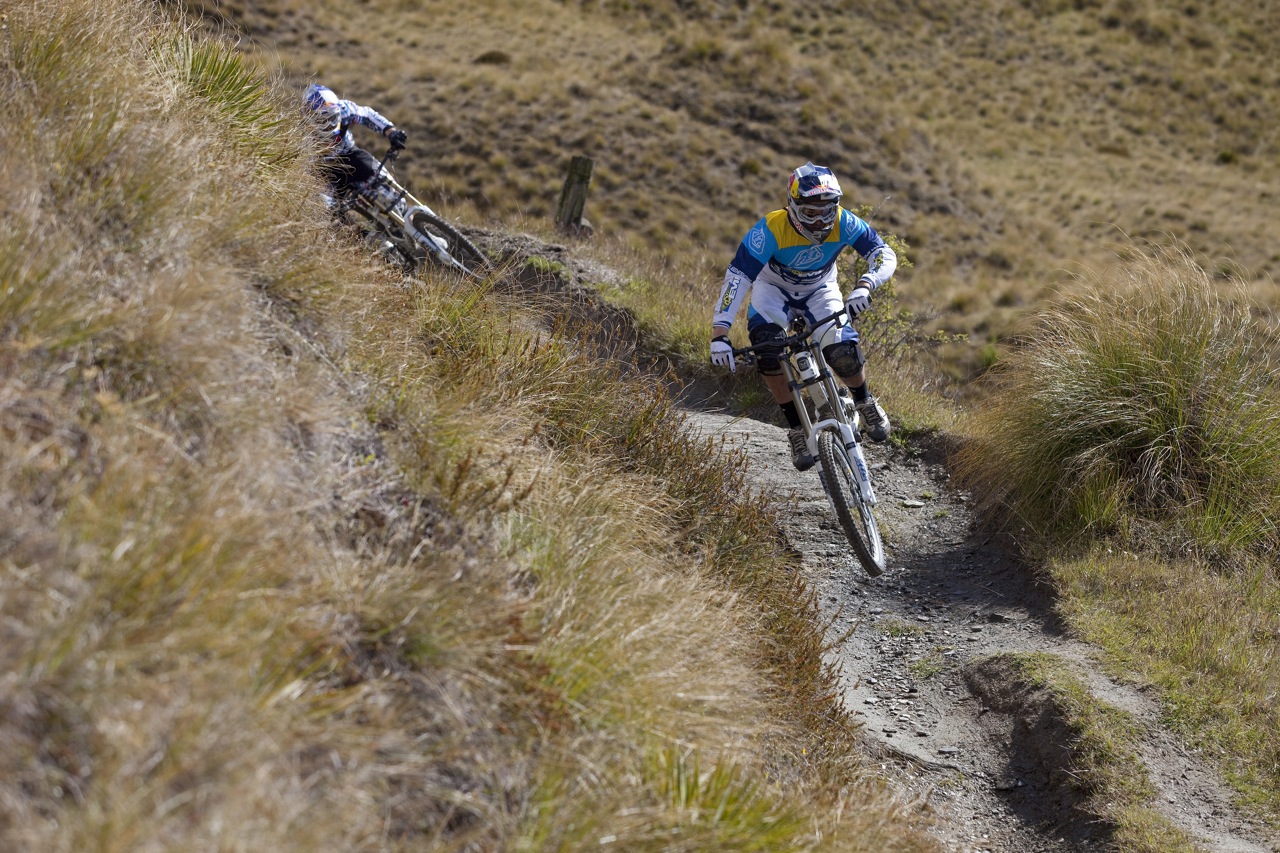
Gee and Stevie both live ‘fast’ but they clearly have two different styles of attacking terrain. Gee is a very fit and powerful rider. And if you watch him closely it is amazing to see how fast he is interpreting the terrain and calculating the best line. Basically one time through a section on a trail and Gee has a pretty good idea as to how this section of trail can be ridden in the quickest way possible. Gee’s ability to instantly read and react to terrain helps make him one of the fastest riders in the world.
Stevie on the other hand, I would describe as ‘hungry’ fast. In Stevie’s mind he is determined to go as fast as possible no matter what lies ahead. If he is leading you down the trail he will not let you stay on his wheel. He will enter sections faster than you would if you were leading. And if Stevie is following you down the trail he is hell bent on letting you know he is right behind you. He is in a tormented pursuit. You can see the blending of the two riders styles in the NZ segment. In the film Gee speaks to it too. He comments that riding with Stevie was pushing him to ride more aggressively. And the fact that Gee is often faster than Stevie as far as racing results go was clearly motivating Stevie’s seemingly bottomless energy to go fast.
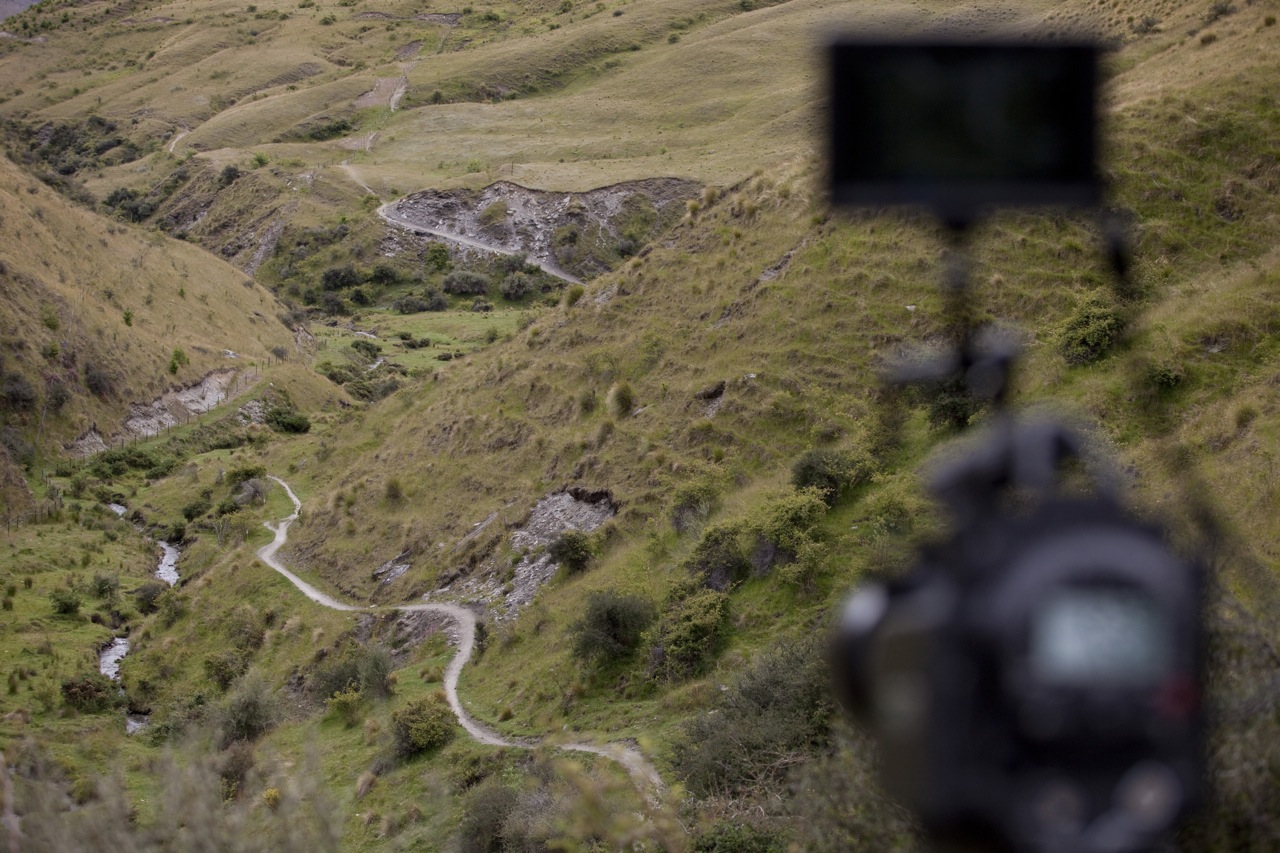
There were many challenges to shooting a mountain bike movie based on a concept that has at least two riders riding together in the majority of the shots. In order to get two riders into the shot we had to create a much looser frame than we normally would when shooting a single rider. A loose frame often puts the emphasis of the shot on the landscape behind the rider and the situation the rider finds himself in. In many cases loose framing, especially on a single rider, slows down the action of the rider lessening the drama of the riders actions in the frame. But one place where the two-rider concept really shined was the downhill tracks and trails surrounding Queenstown. The combination of two fast riders set in the open landscape of the NZ locations lets the viewer enjoy the action and take in the terrain at the same time.
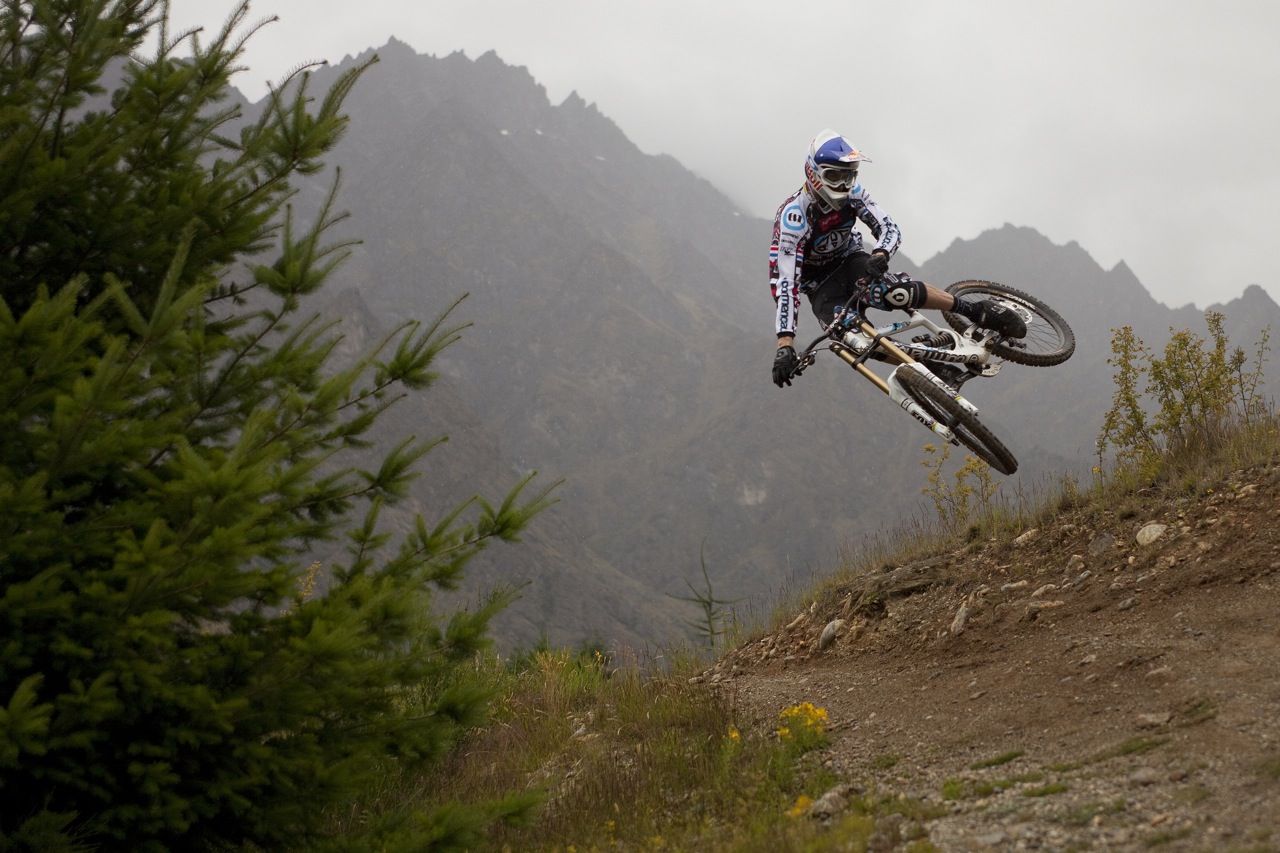
In the end, the New Zealand segment in Follow Me is one of my all time favourite mountain biking segments. This is tough for me to say because I have a deep respect and appreciation for what all of the riders do in our films. I am fortunate to be in a position that gives me the opportunity to befriend the riders and get to know what makes these guys tick. I am out in the field and I see first hand what it takes to ride the way they do. Regardless of the different disciplines and the different terrain, all of the riders work very hard to do what they do.
Follow me is available now on DVD and iTunes. Order your copy of the film HERE.
Anthill Filmmaker Jonathan Schramm
All Photos: Caleb Smith


